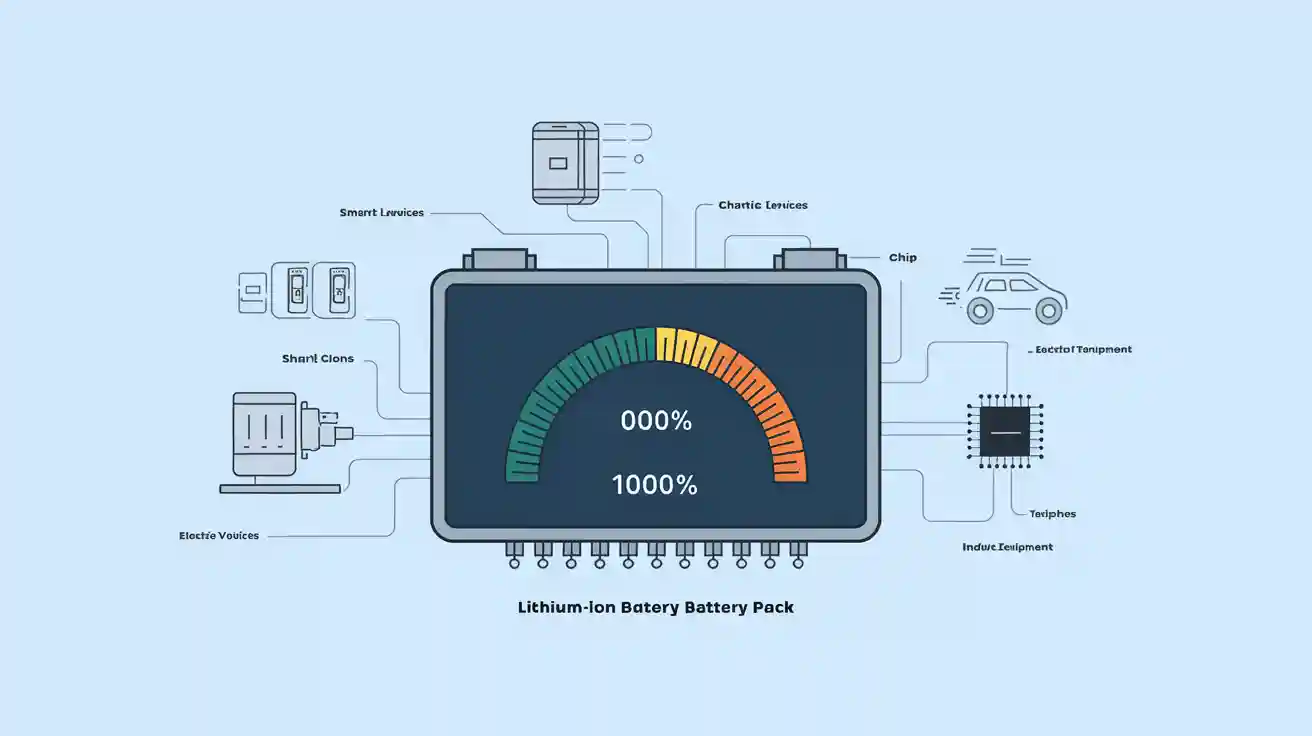
One-Sentence Definition
State of Charge (SOC) is the percentage that quantifies the remaining capacity available in a battery relative to its full capacity, serving as a key indicator of how much energy is left for use.[Wikipedia]
Detailed Explanation
SOC is fundamental in battery technology, especially for lithium-ion batteries used in electric vehicles, smart home systems, and industrial equipment. It acts much like a fuel gauge for batteries, indicating how much charge remains at any given time. SOC is typically expressed as a percentage, where 100% means fully charged and 0% means fully discharged. Unlike a simple fuel tank, however, SOC cannot be measured directly; it must be estimated using a combination of electrical measurements and mathematical models. Factors such as temperature, battery aging, and usage patterns can all affect SOC accuracy.[Analog Devices][ScienceDirect]
Key Components of SOC
- Estimation Methods:
- Coulomb Counting (Current Integration): Tracks the flow of current in and out of the battery over time. Accurate but sensitive to initial value errors and drift.
- Open Circuit Voltage (OCV): Uses the battery’s voltage at rest to estimate SOC, based on known voltage-SOC curves. Most effective when the battery is idle.
- Kalman Filtering & Hybrid Algorithms: Advanced methods that combine multiple data sources and models for higher accuracy, especially in modern Battery Management Systems (BMS).
- Influencing Factors:
- Temperature: Extreme temperatures can reduce battery capacity and affect SOC readings.
- Battery Aging: As batteries degrade, their maximum capacity decreases, impacting SOC calculations.
- Measurement Accuracy: Sensor precision and algorithm quality are critical for reliable SOC estimation.
- Integration with BMS:
- Modern BMS, such as those in Yungbang’s custom lithium battery solutions, continuously monitor and manage SOC to prevent overcharging, over-discharging, and to optimize battery lifespan and safety.
Real-World Applications
- Electric Vehicles (EVs): SOC determines driving range and charging needs, helping drivers avoid “range anxiety.”
- Smart Home & Industrial Systems: In Yungbang’s custom battery packs, high-precision SOC monitoring within the BMS ensures reliable power for smart home devices and industrial equipment, while meeting international safety standards (ISO, UL, CE, etc.).
- Energy Storage: SOC is essential for grid-scale and residential energy storage systems, enabling efficient energy management and cost savings.
Related Concepts and Comparison Table
| Concept | Definition | Key Role |
|---|---|---|
| State of Charge (SOC) | Remaining battery capacity as a percentage of full charge | Indicates available energy |
| State of Health (SOH) | Ratio of current maximum capacity to original capacity | Measures battery aging |
| Depth of Discharge (DOD) | Percentage of battery capacity that has been used (DOD = 100% – SOC) | Tracks usage cycles |
| Open Circuit Voltage (OCV) | Voltage measured when battery is at rest | Used to estimate SOC |
| 电池管理系统 (BMS) | Electronic system managing battery parameters | Monitors SOC, SOH, DOD, OCV |
- Learn more: 电池管理系统 (BMS), State of Health (SOH), Depth of Discharge (DOD), Open Circuit Voltage (OCV)
Visual Aids
 SOC calculation methods: Coulomb counting, OCV, Kalman filtering, and hybrid approaches.
SOC calculation methods: Coulomb counting, OCV, Kalman filtering, and hybrid approaches.
Why SOC Matters for Your Battery Solution
Accurate SOC estimation is crucial for maximizing battery performance, safety, and lifespan. Yungbang’s custom lithium battery solutions integrate advanced BMS technology to deliver reliable SOC monitoring for smart home, industrial, and energy storage applications—backed by international certifications and robust quality assurance.

